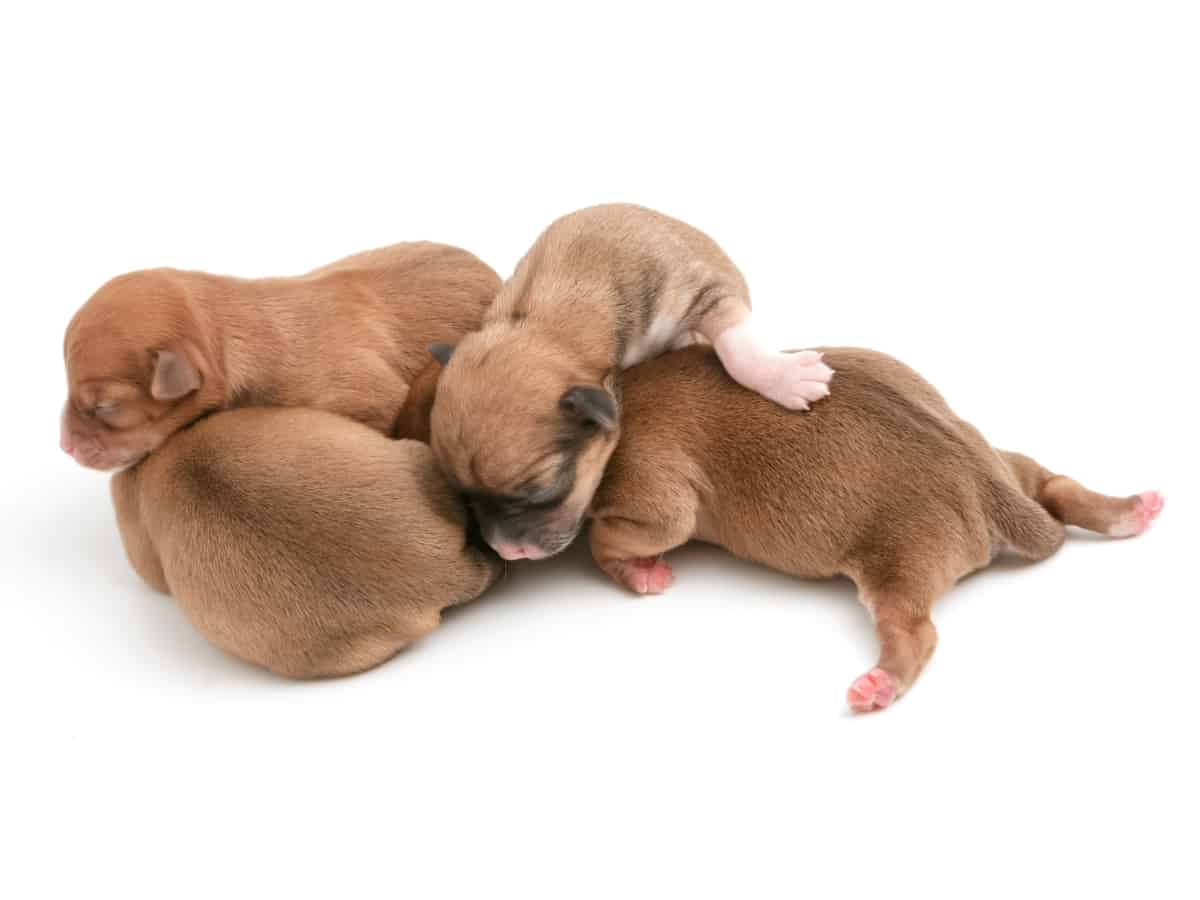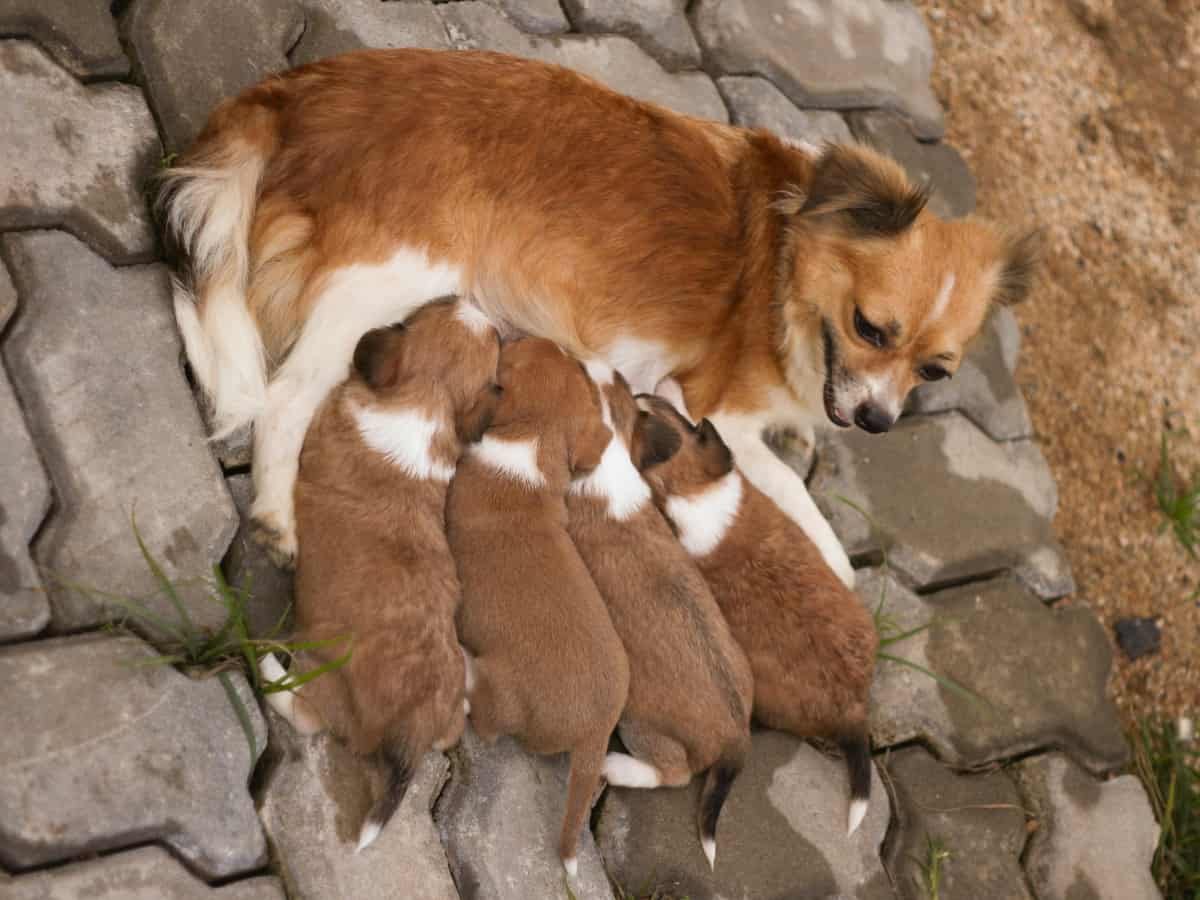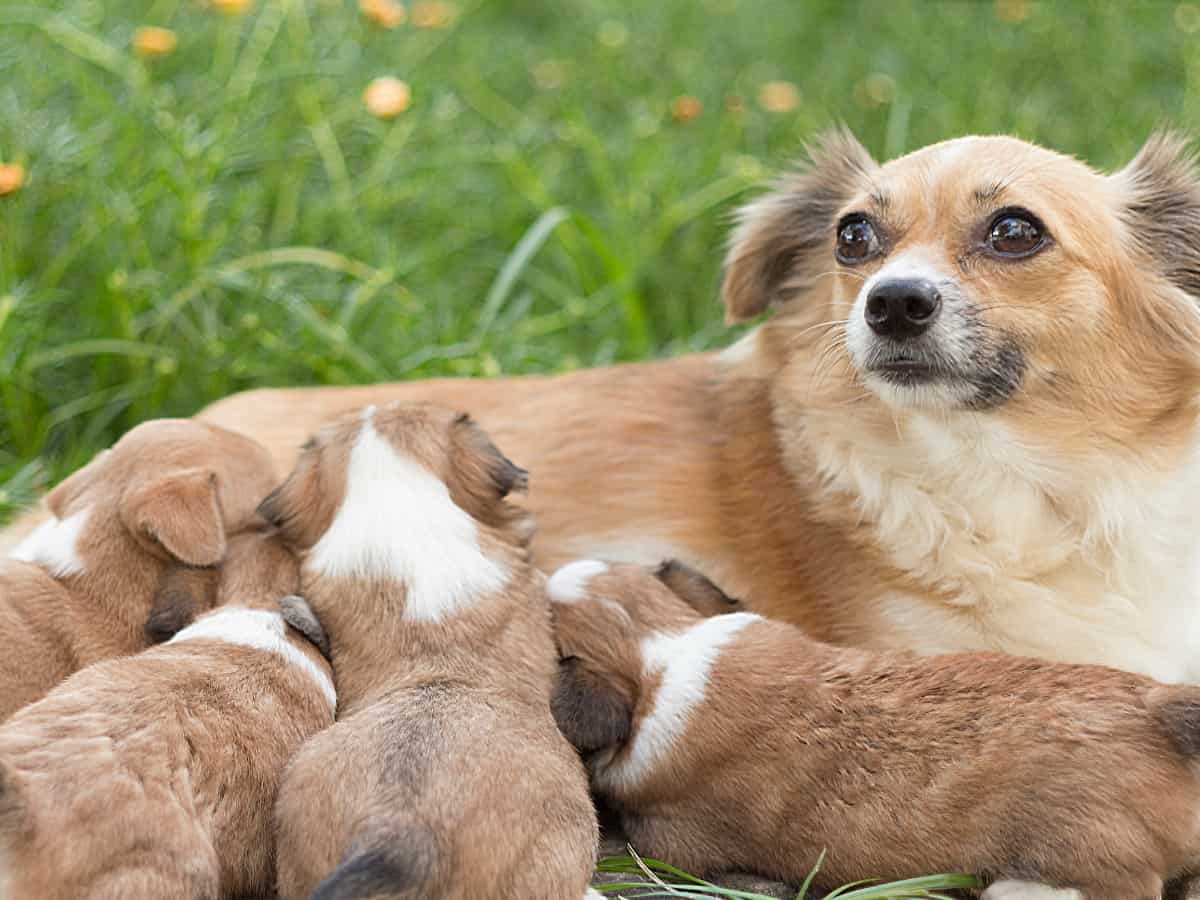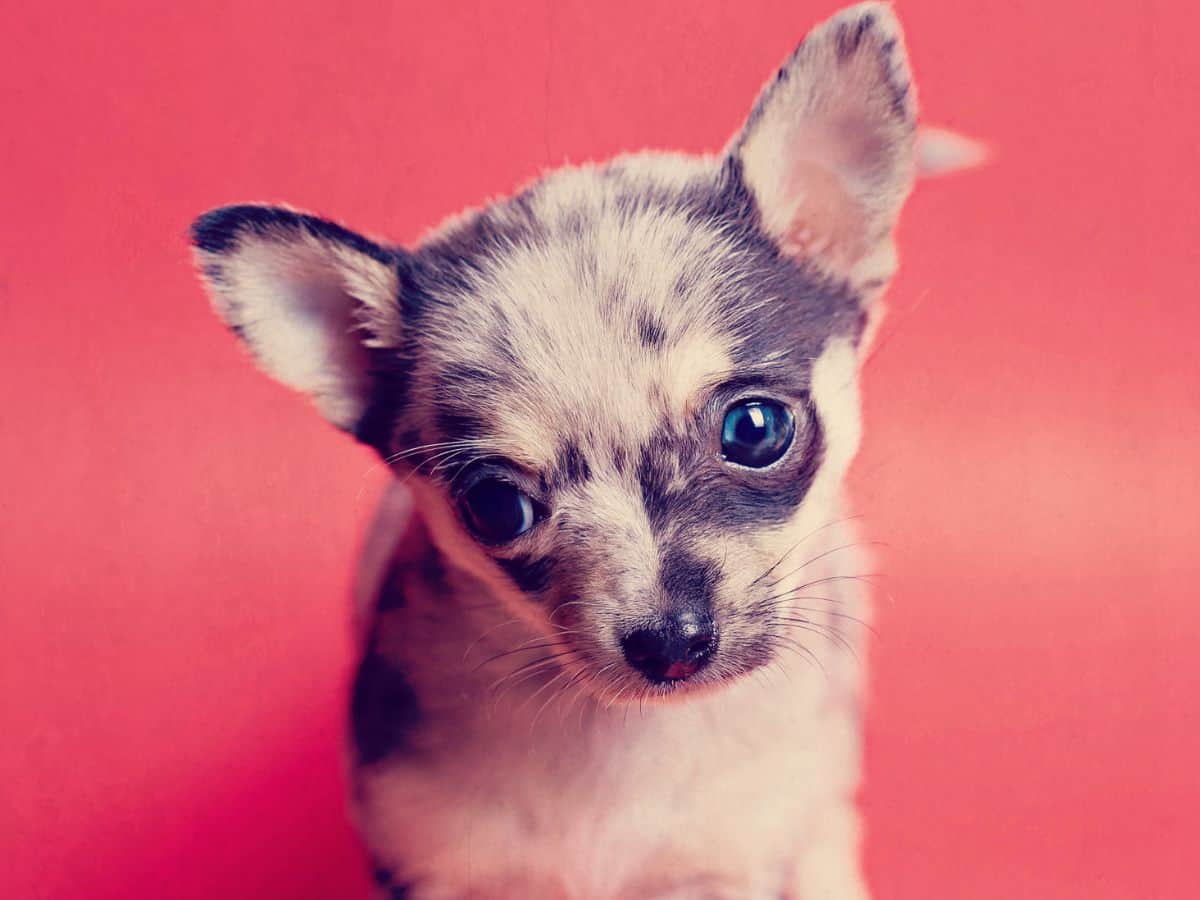Chihuahuas are a popular breed known for their small size and spunky personality. Owing to this breed’s cuteness, I’ve heard many Chihuahua pet parents wanting to breed them. Breeding these tiny dogs may seem like a straightforward process, but there are important factors to consider for the health of both the parents and the puppies, such as the best age for breeding.
The recommended age for breeding female Chihuahuas is around 2 years old, and not before their 2nd heat cycle, while males should be at least 1 year old. This ensures that they are physically and mentally mature and able to handle the stress of breeding and pregnancy.
Breeding a Chihuahua comes at the cost of several pregnancy complications when you don’t organize it right. If you’re keen on breeding your little dog, you need to know everything about it.
I’ve crafted this article to help Chihuahua owners (like my friend) understand what happens and how to be a good breeder. Let’s get started!

Understanding a Chihuahua’s Breeding Age
Chihuahuas are one of the most popular dog breeds, originally from Mexico. Their popularity comes from their tiny size, unique temperament, and charming appearance. Breeding Chihuahuas involves carefully selecting lineage and traits to maintain the breed’s characteristics.
Did you know what the foundation is in ensuring proper breeding? Age! This research study states that the heart rate and health of a Chihuahua are influenced by factors like age, body weight, and health conditions.
When my friend initially asked me about breeding her dog, the first question I asked was – what is her age? Age is linked to the physical and mental maturity levels of dogs.
Physical maturity in Chihuahuas entails the dog reaching their full adult size and development. Similarly, mental maturity pertains to when the dog has reached a stable temperament and has developed the necessary social skills.
While Chihuahuas may reach physical maturity at an earlier age, they often need more time to achieve mental maturity.
Here’s a table to help you understand the various stages of maturity in Chihuahuas:
| Stage & Age of Dog | Maturity | Recommended Action |
|---|---|---|
| Puppy 0-6 months | Growing | No breeding, focus on training |
| Adolescence 6-12 months | Developing | No breeding, focus on socialization and training |
| Young Adult 1-2 years | Physically mature | Monitor for mental maturity before considering breeding |
| Adult 2 years + | Mentally mature | Safe to consider breeding if physical and mental requirements are met |
Throughout these stages, I’d recommend keeping an eye on behavior, temperament, and physical attributes to confirm the health condition before breeding.
Ideal Chihuahua Breeding Age (Males and Females)
When it comes to breeding your Chihuahua, knowing the ideal breeding age for both males and females is crucial. This will not only ensure the health of the parents but also the overall well-being of the offspring.
Let’s discuss the ideal breeding ages for both male and female Chihuahuas and some important considerations for responsible breeding.
Males
Generally, male Chihuahuas should be at least 1 year old before they are used for breeding. This allows them to fully mature, both physically and mentally. However, some breeders choose to wait until the male is 2 years old to ensure optimal health and fertility.
Remember that an overly young or inexperienced male may have difficulties mating, which can result in unsuccessful breeding attempts.
Females
Female Chihuahuas ideally should be bred during their third heat cycle, which typically occurs between 18-24 months of age. Breeding a female Chihuahua too early can pose risks to their health and might affect the quality of the offspring.
Caution! Familiarize yourself with your female Chihuahua’s heat cycle and let them have at least two heat cycles before breeding.
Now that you know the ideal breeding ages, there are a few important points to keep in mind when breeding Chihuahuas.
- Make sure both the male and female Chihuahuas are in good health. Schedule a visit to the veterinarian prior to breeding to evaluate their general health, check for possible genetic issues, and ensure that they’re suitable for breeding.
- Monitor the female Chihuahua closely during her heat cycle, and ensure that no accidents or unplanned breedings occur. Be prepared for possible complications that may arise during pregnancy, such as the need for a cesarean section in some cases.
- Be responsible with your breeding choices and take the time to learn as much as possible about Chihuahuas’ specific health concerns, to improve the overall well-being of the offspring.

Heat Cycle of Chihuahuas
Understanding the heat cycle of your Chihuahua is essential before breeding. Being wary of potential complications can promote responsible breeding and increase the chances of delivering healthy puppies.
A heat cycle in a female Chihuahua is the period when she is receptive to mating and can become pregnant. Female Chihuahuas typically experience their first heat cycle between 6 and 9 months of age and continue to experience heat cycles every 5-6 months on average.
There are four stages to a Chihuahua’s heat cycle:
- Proestrus: This stage lasts around 9 days, during which the female may experience a bloody discharge and show swollen genitalia. Males may express interest, but the female is not yet receptive to mating.
- Estrus: Lasting approximately 9 days, this is the critical mating period. The female’s discharge changes to a lighter color, and she becomes receptive to male advances.
- Diestrus: This stage lasts around 63 days if the female is pregnant, or 60-90 days if she is not pregnant. The female is no longer receptive to mating, and her body either supports the pregnancy or eventually returns to normal.
- Anestrus: This is the resting stage between heat cycles, which can last between 4-5 months.
Male Chihuahuas do not experience heat cycles. Instead, they are always ready to mate when a female is in heat. It is important for a Chihuahua owner to be aware of male Chihuahuas becoming more interested in females during their heat cycles.
Factors Affecting Breeding Age
When you think of breeding, it’s recommended to connect yourself to the basics, as shared by the American Kennel Club (AKC). It has laid responsible dog breeding practices to avoid errors and maximize the success rate.
So, back to breeding Chihuahuas, I’ve often been asked why age matters. Some believe that their dogs have attained the breeding age and head right on. This is where everything can go wrong! Breeding age is influenced by multiple factors.
Let me take it in detail.
The American Kennel Club Canine Health Foundation (AKCCHF) conducted a roundtable to discuss proper breeding practices and experiences of vets. In one case, a dog that was about to be bred was found to be suffering from hip dysplasia. Had the breeding happened, it would’ve worsened her life and the well-being of her offspring.
In another excerpt shared by a vet, an older Chihuahua (about 6 years old) was bred, and the sperm quality was poor. This led to a failed breeding and left the dog at stake.
These are just a couple of instances. Here’s a range of factors influencing the breeding age.
Health Conditions
Ensuring that your Chihuahua is in optimal health before breeding is crucial for both the dog’s well-being and the health of its potential puppies. Make sure to schedule regular check-ups with your veterinarian and address any health concerns that might arise, such as heart, thyroid, or eye problems.
Additionally, a Chihuahua’s overall fitness plays an essential role in successful mating, so maintaining an ideal weight and offering regular exercise are vital factors to consider.
Genetic Factors
Chihuahuas, like all dog breeds, can be prone to certain genetic health conditions. To minimize the risk of passing these on to their offspring, it is wise to be aware of your dog’s genetic history before considering breeding. Moreover, some genetic factors can influence the ideal breeding age.
For example, smaller breeds like Chihuahuas may reach sexual maturity earlier than larger breeds, which means that they can potentially be bred at a younger age.
Social Environment
The environment in which your Chihuahua lives can also impact its breeding potential. An anxious or stressed dog is less likely to have a successful mating experience. Therefore, you should create a calm and stress-free atmosphere for your Chihuahua during the breeding process.
By providing them with a comfortable and familiar environment, you can help pave the way for a more fruitful mating experience.

What Happens When You Breed A Chihuahua Too Early?
Breeding your Chihuahua too early can lead to complications for both the mother and her puppies. Ideally, a Chihuahua should be at least 2 years old before breeding to ensure she is fully mature and able to handle the physical and emotional demands of pregnancy and delivery.
When a Chihuahua is bred too early, she may not be physically prepared for pregnancy, leading to a higher risk of complications during delivery. One such complication is the need for a cesarean section (C-section), which can be costly and pose additional risks to the mother’s health.
Another issue with early breeding is the potential for underdeveloped maternal skills. Younger Chihuahuas may not have developed the necessary instincts to care for their puppies properly, which can lead to poor overall health and growth of the pups. This lack of proper care can result in a higher mortality rate for newborn puppies.
Additionally, the birth process itself may be more difficult for a young Chihuahua. Smaller and less experienced female dogs can have trouble delivering their pups, which may result in the need for cesarean delivery. This also increases the risk of complications for newborn puppies, such as low birth weight or difficulty breathing.
Remember, breeding your Chihuahua too early can have long-lasting consequences, so it’s crucial to be patient and wait for the right time to breed your beloved pet.
What Happens When You Breed an Aged Chihuahua?
An aged Chihuahua is typically one that is around 8 years old or older, and breeding these dogs at this stage is not recommended due to various health risks and complications.
In this section, we’ll discuss some of the possible consequences and challenges faced by an aged Chihuahua when they are bred.
- Breeding an older Chihuahua can put additional stress on their body, worsening any pre-existing health issues they may have.
- Pregnancy and nursing can be physically demanding, and your older Chihuahua may struggle with providing the necessary care and nutrition to their puppies.
- They may also require more attention from you as the dog owner to ensure their overall health and well-being.
A breed characteristic of Chihuahuas is the presence of genetic traits that might be passed down to the puppies. Breeding an aged Chihuahua can increase the chances of hereditary health problems being passed on to the litter.
You must be aware of potential genetic issues and consult with a veterinarian or trusted breeder about the risks associated with breeding your older Chihuahua.
Several dog owners had also stated how breeding turned out riskier/more complicated when the dog was over five or six years of age.

Pre-breeding Health Tests
I’ve been repeating umpteen times about the importance of careful breeding. So, how do you ensure that your Chihuahua is fit? This is where a pre-breeding health test comes into the picture.
Following the breed standard set by organizations like the American Kennel Club (AKC) can help ensure that the appearance, body shape, and features of your Chihuahua adhere to the ideal characteristics.
DNA Testing for Pre-breeding Health
One crucial aspect of pre-breeding health tests is DNA testing. Dog DNA tests can help identify potential genetic issues or diseases in your Chihuahua, providing you with valuable information about their overall health.
Some common DNA tests include those for patellar luxation, cardiac issues, and eye conditions. These tests will give you the peace of mind needed to breed your Chihuahua in a responsible and ethical manner.
When selecting a mate for your Chihuahua, it’s essential to take into account their genetics and compatibility. DNA testing can help identify any potential risks or incompatibilities, ensuring that your future puppies will be healthy.
In addition to the standard health tests, make sure both Chihuahuas have suitable temperaments and are compatible in size, body shape, and features.
If you’d like to conduct a test at your home, I recommend purchasing this kit:
- BREED ID THATS TWICE AS PRECISE: Embark tests over 230,000 genetic markers, twice as many as the next competitor. We also screen for 350+ dog breeds, more than any other dog DNA test. This means Embarks test is the most accurate and scientifically advanced on the market.
- HIGHEST RATED & MOST TRUSTED: Embark is the highest rated dog DNA brand on Amazon.com with over 16,000 5-star reviews. Only Embark uses research-grade data and is partnered with Cornell University College of Veterinary Medicine. In a blind study, dog owners rated Embark as the most trusted dog DNA test.
- DISCOVER YOUR PUPS RELATIVES: Find and connect with your pups family through the world’s first canine relative finder. Over 90% of dogs tested by Embark have a close relative, like a cousin, and 12% discover a direct family member.
- EXCELLENT SERVICE & FAST RESULTS: Have a question about your results? Just talk to one of our dedicated vets or geneticists. Embark generally delivers results in 2-4 weeks and keep you updated every step of the way. Embark kits are best used by the date printed directly on the swab to ensure DNA extraction goes smoothly. In the event of a swab that exceeds its best by date or a DNA sample failure due to materials, Embark support will provide a fresh swab upon purchase verificati
Waiting Period Between Litters
So, you now know about the ideal Chihuahua breeding age, the factors associated, and the importance of pre-breeding health tests. If you’ve found that your Chihuahua is fit, you’re more likely to breed her frequently. Is that right?
NOOO!
“There’s a waiting period between litters and ignoring this period can put your dog at risk. Seriously!”
One of the primary reasons for maintaining a suitable waiting period between litters is to allow your female Chihuahua to fully recover from the previous pregnancy.
This recovery period includes replenishing physical resources, allowing for any necessary weight regain, and providing time for the female to return to her normal behavior and social interactions.
When planning the waiting period between litters, consider the following factors:
- Female Chihuahua’s age: After 5 years of age, conception rates and litter size can begin to decline. You should be mindful of your Chihuahua’s age when planning the timeframe between litters.
- Number of previous litters: The more litters a female Chihuahua has had, the longer her recovery time may need to be. Ensure that your dog has adequate rest and time to regain her strength before attempting another breeding.
- Health status: Always consult with a veterinarian to determine if your Chihuahua is healthy enough for breeding and what waiting period would be most appropriate.
- Kennel Club guidelines: Many kennel clubs have specific guidelines and recommendations concerning breeding frequency and litter numbers. Be sure to familiarize yourself with and follow these guidelines to ensure responsible breeding practices.
Remember to keep your Chihuahua’s best interests in mind when planning the waiting period between litters. Maintaining a friendly, nurturing environment and prioritizing the health of your dogs will not only lead to healthier, happier puppies but will also contribute to your reputation as a responsible Chihuahua breeder.

Ethical Considerations in Chihuahua’s Breeding
Thinking about breeding your Chihuahua isn’t wrong! But is it ethical? Are you prepared to follow ethical practices or be a backyard, illegal breeder?
Perhaps, the former, right?
As a responsible Chihuahua breeder, it’s essential to maintain the health and well-being of your dogs and their environment. This will ensure the positive upbringing of future litters.
Here are some key aspects to consider when providing care for your Chihuahuas:
- Nutrition: Provide a balanced and nutritious diet to keep your Chihuahuas in optimal condition. Make sure they have clean water available at all times. Sometimes, they can become picky and might need an extra step from you to make them eat.
- Shelter: Provide a safe and comfortable living space, with appropriate temperature control and bedding to accommodate their small size.
- Exercise: Chihuahuas need regular exercise to stay fit and maintain a healthy weight. Make time for walks and play sessions to keep them both physically and mentally engaged.
- Grooming: Regular grooming is necessary to prevent matting and keep their coats clean and healthy. This includes nail trimming, dental care, and occasional baths.
- Healthcare: Frequent veterinary check-ups and vaccinations are important to ensure your Chihuahuas have no underlying health issues and meet breed standards.
In many cases, breeders might want to breed their dogs quickly and skip responsible breeding practices as recommended by the American Kennel Club. In addition to risking their dog, they’re also responsible for complications occurring during the process.
So, research extensively, take ample time, and then decide on a call about breeding your Chihuahua. Never force your little one!
Frequently Asked Questions
When do Chihuahuas reach breeding maturity?
Chihuahuas reach breeding maturity between 6 to 12 months of age for females and 8 to 12 months for males. Even though they may be capable of breeding, they might not be mature enough mentally or physically to handle the process. For this reason, it’s recommended to wait until your Chihuahua is at least 1.5 to 2 years old before breeding them.
How many puppies can a Chihuahua have in its first litter?
The number of puppies a Chihuahua can have in its first litter depends on various factors such as size, genetics, and the individual dog. On average, a Chihuahua can give birth to 1 to 4 puppies in its first litter. However, don’t be surprised if your Chihuahua has only one puppy or as many as 6 puppies in a litter.
What should I know about breeding teacup Chihuahuas?
Teacup Chihuahuas are smaller and more fragile than regular-sized Chihuahuas. Breeding them can pose risks to both the mother and the puppies. Due to their small size, teacup Chihuahuas may have difficulty giving birth and could require cesarean sections.
If you decide to breed teacup Chihuahuas, consult with your veterinarian to ensure both the mother and the puppies have the best chance for a healthy birthing process.

How do I care for a Chihuahua in heat?
When your Chihuahua is in heat, she will exhibit certain behaviors like frequent urination, mood swings, and even bloody discharge. Pay attention to her behavior changes during this time.
You can use dog diapers to keep your home clean from the discharge. Make sure to monitor and limit her interactions with male dogs to avoid unwanted pregnancies.
Read more: 10 Effective Ways to Calm a Dog In Heat
What’s the normal menstruation age for Chihuahuas?
Chihuahuas usually begin their menstruation cycle (coming into heat) between 6 to 12 months of age. Keep in mind that smaller breeds like Chihuahuas tend to reach puberty earlier than larger breeds. Once they start, Chihuahuas typically go into heat every 6 to 8 months, so it’s essential to keep track of this cycle for proper breeding management and overall health considerations.






